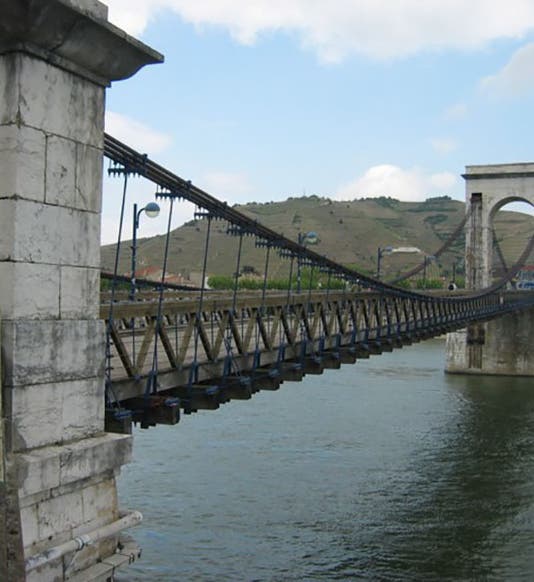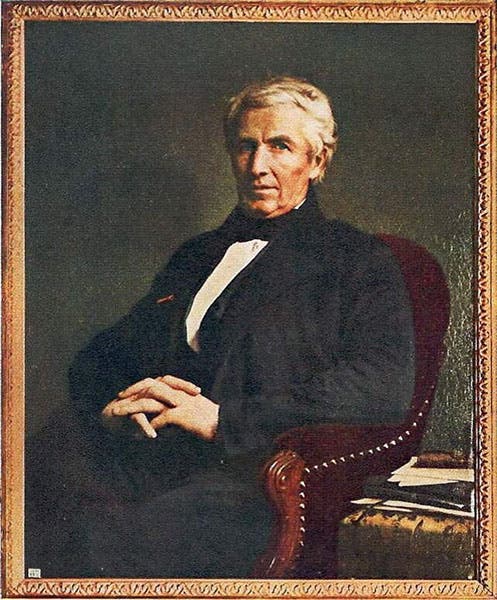Scientist of the Day - Marc Seguin
Marc Seguin, a French civil and mechanical engineer, was born Apr. 20, 1768. In 1825, Seguin and his four younger brothers built the world's first suspension bridge in which the roadway was suspended from wire cables; it was erected over the Rhône river between Tournon and Tain l'Hermitage and had two spans of 290 feet each. Many of you are familiar with the Menai bridge in Wales, designed by Thomas Telford, a beautiful and justly famous suspension bridge. But the Menai Bridge was completed a year after the Seguins' Rhône bridge was opened, and it used flat wrought-iron eye bars instead of wire cables for suspension. Seguin used cables made up of hundreds of individual wires, just like most later suspension bridges. In fact, Seguin invented the wire suspension bridge. He and his brothers would eventually erect over 180 suspension bridges in France. His 1825 Rhône bridge had to be raised and converted to a pedestrian bridge in 1847, because it was blocking river traffic, and so he built another bridge a few hundred yards away, opened in 1849. The original 1825 bridge was torn down in 1965 (why, one wonders?), but the 1849 bridge still stands (first image). Another view shows it from the air, at the left. The oldest Seguin bridge still in place is one he erected in 1827, called the Andance bridge, also across the Rhône about 15 miles north of Tournon; a different view shows less of the bridge, but is more pleasing as a photograph. Seguin published a book on wire suspension bridges even before his first bridge was completed; it was titled Des ponts en fil de fer (On iron wire bridges, 1824). Seguin’s book is one of the true classics of bridge construction, and we were fortunate to acquire a copy in 2003 from British bookseller Roger Gaskell. It is a presentation copy from Seguin and signed by him, but we do not know to whom it was presented Our copy has five plates, but alas, it is out of reach at the moment, as are all of our rare books, so we cannot show you any of the plates. Someday, when things are back to normal, we will rewrite this piece with some views of this book included.
We mentioned that Seguin was also a mechanical engineer; in particular, he tinkered with locomotive design, and in 1829, he invented and built a steam locomotive with a multi-tube boiler that was much more efficient than the locomotives then being produced by George Stephenson and his son Robert in England. Soon all locomotives, including the Stephensons’, would incorporate multi-tube boilers. A replica of one of Seguin's engines was built recently; you can see a still shot here, and there are several YouTube videos that show it chugging along; here is one, of which the first 60 seconds will probably suffice. There is a portrait of Seguin by Hippolyte Flandrin (second image) that seems authentic, but I don’t know when it was painted or where it is now. It seems authentic because Louis Figuier used it as the basis for the wood-engraved portrait he included in his always useful Les merveilles de la science (1867-91), which we have in our History of Science Collection. In fact, we discussed Figuier and his Les merveilles de la science once, in a Scientist of the Day post. There are lots of statues of Seguin in France; he is very popular in his native land. Here is the one that stands in Tournon. Dr. William B. Ashworth, Jr., Consultant for the History of Science, Linda Hall Library and Associate Professor emeritus, Department of History, University of Missouri-Kansas City. Comments or corrections are welcome; please direct to ashworthw@umkc.edu.







